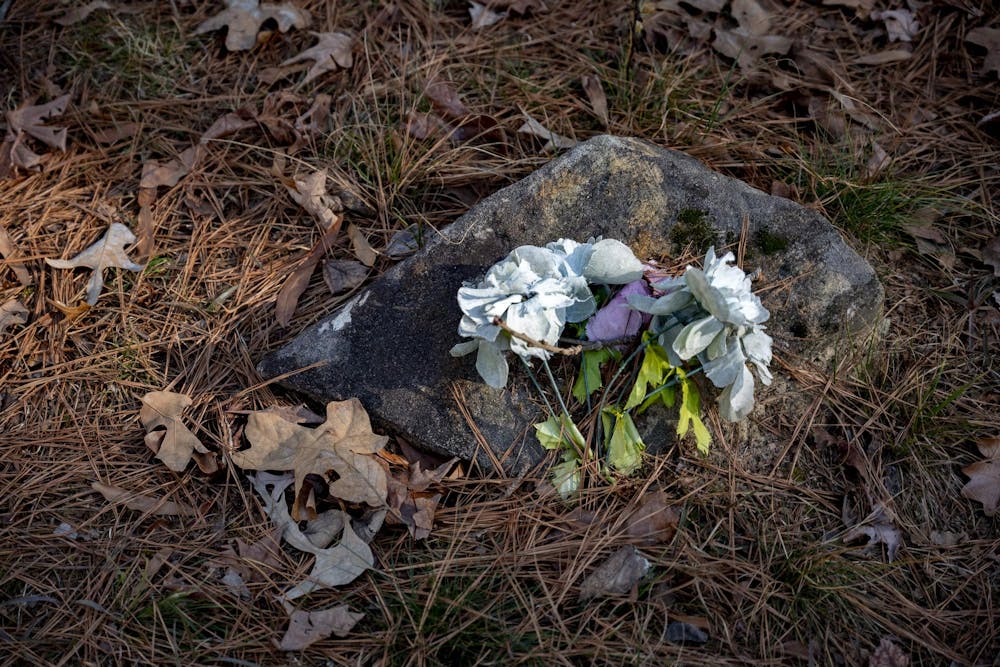Across from Hooker Fields and behind Connor Residence Hall, a corner of the University's history sits hidden in plain sight.
Students walk through it on game days, crossing from Cobb parking deck toward the Dean E. Smith Center, often without a second thought at how they're one more generation walking past the graves of those that came before them.
The Old Chapel Hill Cemetery was established in 1798 after a land grant given two years prior and serves as the final resting place for various individuals associated with the University. While holding historical significance, it also reflects the histories of Black individuals who contributed to the University's development.
The cemetery contains approximately 1600 burials spread across six sections, labeled A-B and I-IV. The Dialectic and Philanthropic Societies were the first to establish plots on the land, with the earliest recorded burial belonging to 19-year-old George Clarke.
The grounds are also the final resting place of various public officials, local authors, Confederate soldiers from the Civil War and veterans from subsequent wars.

The Chapel Hill cemetery sits across from Hooker Fields and behind Connor Residence Hall.
Historically, sections A and B were designated for Black burials, both enslaved and free individuals, due to the lack of Black church cemeteries in the 18th and early 19th centuries. Burials in these sections were typically marked by a simple field stone instead of inscribed headstones and often go unrecognized as grave markers. Because of this, many of those stones have been removed or relocated over time, resulting in numerous unidentified graves.
Notable individuals buried in these sections include George Kirkland, the first Black dentist in Chapel Hill; Wilson Swain Campbell, an ex-slave who established the Town’s first school for Black people; and George Barbee, who has one of the oldest stones in Section B.
The cemetery has undergone instances of neglect and damage, including past acts of vandalism that have raised concerns about its preservation, with 40-50 monuments broken and toppled in 1974 and football fans damaging field stones in a rush to reach the stadium in 1985. It’s unclear if these damages were intentional or not.





